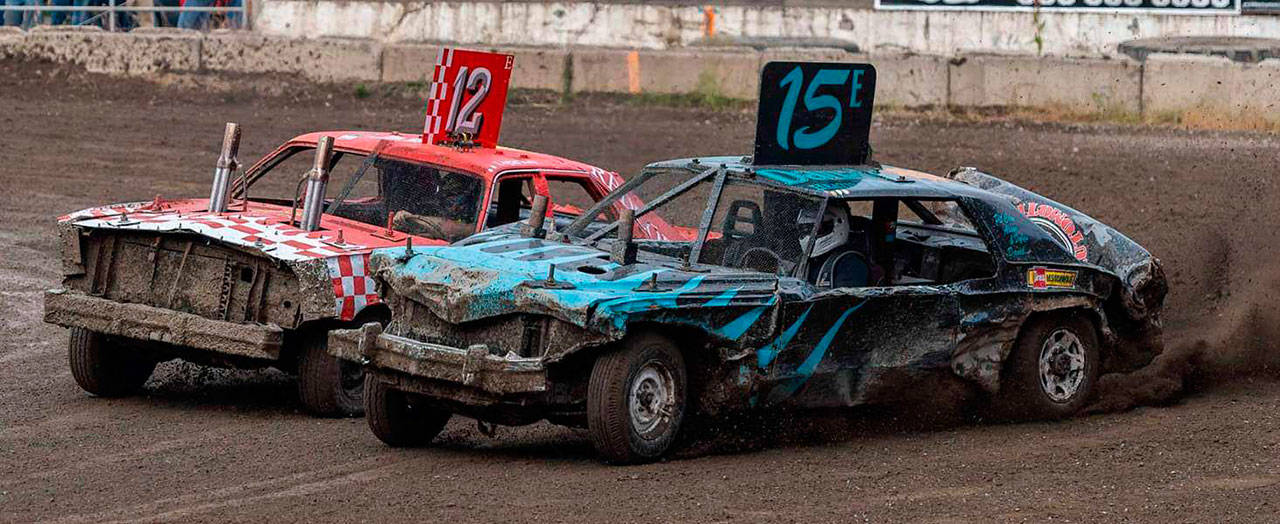One of the many exciting events to take place at the Kitsap County Fair is the Demolition Derby and Derby races.
The Kitsap Destruction Derby Association (KDDA) began in the 1970s as stock car demo races for drivers that liked a little more contact in their racing at the old track in Silverdale, which is now home to the Central Kitsap High School stadium. The races drew large crowds of people eager to see the cars get destroyed and it didn’t take long for the drivers to oblige.
But how does one become a derby driver?
According to Dan Pieze, most of today’s derby drivers were raised on it.
“I grew up in it, my parents did it. A lot of the drivers you see today were raised on it. It’s a pretty family-oriented sport,” Pieze said.
Pieze has been racing for KDDA for the better part of 28 years, with his first race being in 1991 at age 15.
The Herald chatted with Pieze about the upcoming races and the demolition derby at the upcoming fair, which for many derby racers is the “time to shine” before the season ends in September.
Question: What kinds of cars are typically used in derby racing and demolition and how are they reinforced to take damage?
Pieze: We use a lot of cars from the 1970s, usually the old Chryslers or Cadillacs. Some people run more modern cars like modified Chevy Suburbans or other SUVs. There’s also a class of smaller derby cars from Honda and Toyota.
Cars from the ’60s and ’70s were built a lot tougher than cars of today so there’s not much you have to do to them to make them derby-ready. Typically what happens is the windshields and glass are removed and a roll cage is put on the car to protect the driver. Also the fuel tanks and batteries are moved inside the car to prevent gas leaks and other serious damage.
One of the main focuses of the modifications is driver safety, we constantly add new safety standards so drivers can enjoy the races and be able to walk away.
Q: What kind of training goes into becoming a derby driver?
Pieze: Most of the drivers started in the pit crews learning about the cars. During races we offer a “pit man’s” race so drivers in training can get some experience. Drivers have to be 18 or older, but you can be as young as 14 to work in the pits, most of our drivers right now are in their late 20s early 30s.
Q: What are your favorite and least favorite parts of derby?
Pieze: My least favorite part is building and modifying the cars. It’s hard work and can take a long time to do. My favorite part is the race day, the energy that day is just fantastic and so much fun.
Q: What is something you want people to know about derby that they may otherwise not know?
Pieze: A lot of people come for the demolition part of the derby, which is a lot of fun. But most of them don’t know about the actual races that are happening, and that the majority of the cars that are at the derby are there to race.



